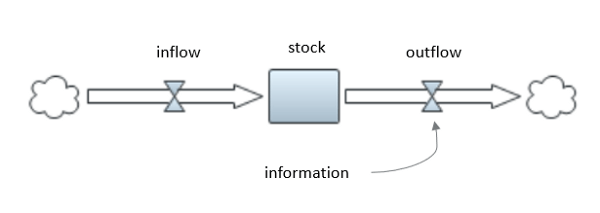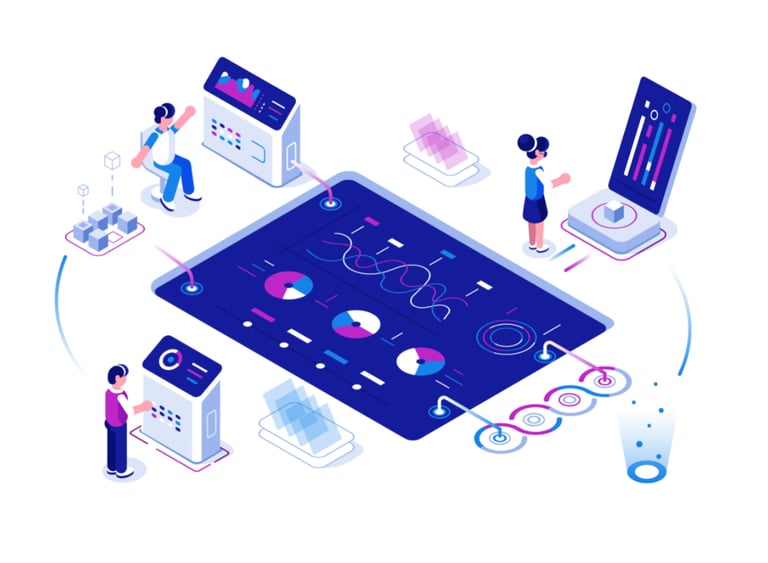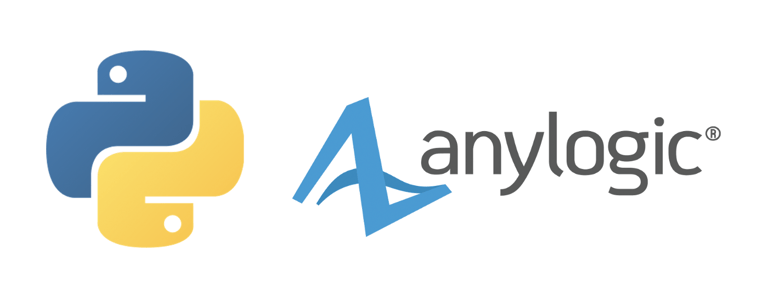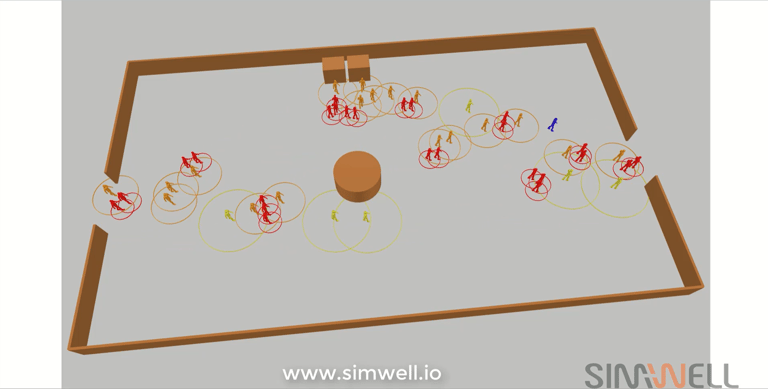Choosing the Right Types of Simulation For Your Project
Before starting to build any simulation model for a given project, it becomes crucial to identify the types of simulation that best matches the system to be modeled.
Will the system evolve over time?
Will the system agents interact with each other’s and with their environment?
Will agents be capable of adapting to new conditions, thus changing their decision patterns? Is the system to be modeled it a dynamic or complex system?
In this blog, we will review the most popular types of simulation widely used by professionals and academics to conduct simulation studies.
Discrete Event Simulation (DES)
This is one of the types of simulation that models a system as a sequence or series of events. In discrete event simulation every step in the process is an event. Variables (like number of resources, processing time, etc) change at separate points in time. From a mathematical perspective, it can be said that the system can change at only a countable number of points in time; such point are the ones at which an event occurs (i.e. an instantaneous occurrence that may change the state of the system).
Due to the dynamic nature of DES models, simulation analysts must keep track of the current value of simulated time as the simulation proceeds; in addition, they need a mechanism to advance simulated time from one value to another.
The simulation clock is the variable within a simulation model that gives the current value of the simulated time.
Next-event time advance and fixed-increment time advance are the two principal approaches suggested for advancing the simulation clock in a DES model.
Agent-Based Simulation (ABS)
This is one of types of simulation where the entities (agents) interact with other entities and their environment in a significant way.
ABS are considered as a variation of DES since in al virtually ABS, state changes to occur at a countable number of points in time.
Agents are autonomous “entities” that can sense their environment and other agents within it and use this information in making decisions.
They have attributes and a set of if/else rules that are used to determine their behaviors. Agents also learn (i.e. gain a better understanding of the status of other agents and their environment) and adapt to behaviors (i.e. change their decision criteria and rules) overt time, which requires them to have some form of memory.
ABS use a bottom-up approach to modeling; the emphasis is on describing the behavior and interaction of the individual agents. ABS models work better in object-oriented software package (e.g. Java) since they allow instantiating variables (or data) that correspond to agents’ attributes and methods that correspond to their behaviors.
Some situations when an ABS could be used include:
- When the system has entities that naturally interact with each other and their environment
- When it is important for entities to learn and to adapt their behavior over external circumstances
- When the logic and movement of entities depends on situational awareness (i.e. perception of its environment), rather than by a fixed “script”.
System Dynamics
This is a type of continuous simulation used for designing and improving business strategies, government policies and military planning.
It is considered as a top-down approach to modeling a system, generally through deterministic models, but with the possibility of incorporating random components.
AnyLogic represents of the most commonly used software for developing and analyzing system dynamics models.
There are three key components in any system dynamics model:
- Stocks: they are accumulation of a “resource” (e.g. populations, inventories, or level of a stores fluid). Stocks are represented by rectangles (or containers) in a stock and flow diagram.
- Flows: they are streams of a resource into or out of a stock. Flows are represented by thick, double-line arrows (or pipes) with a superimposed butterfly valve that controls the rate of flow through the pipe.
- Information links: they bring information from a stock to the valve of a flow, and it is typically represented by a thin curved arrow.
AnyLogic, a commercial simulation software package marketed by The AnyLogic Company, supports ABS, DES and system dynamics, or a combination of the three. The behaviors for agents are developed by using state charts, process flow-charts, or system dynamics equations, and can be extended by writing Java code
About SimWell
At SimWell, we know you’re a trailblazing business leader, and it’s your job to make confident, informed decisions. The problem is you have a complex operation with infinite variables and interactions that just don’t fit on a pivot table. This leaves you utterly underwhelmed by the predictive tools at your disposal, and completely overwhelmed by the massive decisions looming.
We understand the all-consuming nature of big decisions, and the sleepless nights that surely follow. We know the pressure you’re feeling and we’re here to help. You need REAL answers based on the complexities of your operation. With cutting-edge simulation software from SimWell, you get just that.
We help you accurately predict the outcome of your decisions, giving back years of trial and error, saving you countless costs, and setting you free to be a trailblazing business leader. Press fast-forward on your big decisions with SimWell.
Email: info@simwell.io | Phone: +1 (412) 218–0913









